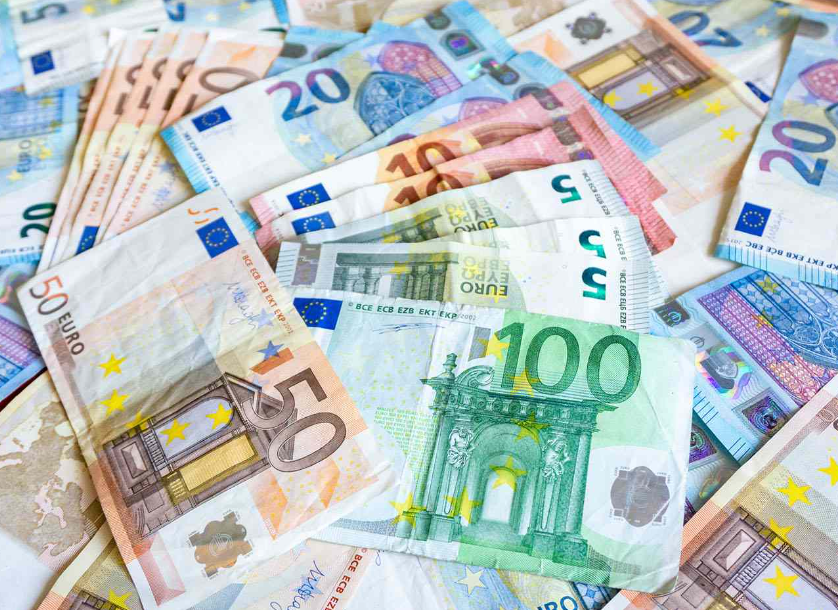As a France National Currency expert, it is crucial to understand the financial system of a country, including its France National Currency. In France, the official currency is the Euro, which replaced the French Franc in 2002. This article aims to provide you with a detailed guide on the Euro, including its history, value, design, and other relevant information.
History of the France National Currency
The Euro is the official currency of the European Union (EU), which was created to promote economic and political cooperation between its member countries. The idea of a single currency for Europe was first proposed in the 1970s, but it was not until the 1990s that the Euro project began to take shape.
The Euro was introduced in France in 2002, replacing the French Franc. The Euro was introduced in stages, with the exchange rate between the Franc and the Euro fixed at 1 Euro for 6.55957 Francs. The Euro is now the second most widely used currency in the world, after the US Dollar.
The Value of the France National Currency
The value of the Euro is determined by the foreign exchange market, which is influenced by a variety of factors, including economic conditions, political stability, and interest rates. The Euro's value can fluctuate widely, depending on these factors.
As of March 2023, the Euro is trading at around 1.15 US Dollars, making it one of the most valuable currencies in the world. The Euro has a high degree of stability compared to other currencies, which makes it an attractive currency for investors.
The Design of the France National Currency
The Euro banknotes feature different designs for each denomination, with bridges and arches as the main theme. The coins also feature different designs for each denomination, with the common side featuring a map of Europe.
The Euro banknotes and coins are designed to be difficult to counterfeit, with a range of security features, including holograms, watermarks, and special printing techniques. The Euro banknotes and coins are also designed to be durable, with a lifespan of around 10 years for banknotes and 30 years for coins.
The Use of the France National Currency
The Euro is the official currency of France, and it is used for all transactions, including buying goods and services, paying taxes, and receiving salaries. France is one of the 19 countries that use the Euro as their national currency, and it is also used by several other countries as a de facto currency, including Monaco and Andorra.
The use of the Euro in France has had a significant impact on the country's economy, making it easier to conduct business and trade with other European countries. The Euro has also helped to reduce the cost of exchanging currencies, as there is no longer a need to exchange Francs for other European currencies.
Advantages and Disadvantages of the Euro
The Euro has several advantages and disadvantages, depending on the perspective. Some of the advantages of the Euro include increased economic stability, reduced transaction costs, and increased trade between European countries.
However, there are also some disadvantages to the Euro, including loss of control over monetary policy, difficulties in adjusting to economic shocks, and potential for diverging economic conditions between member countries.
Overall, the advantages of the Euro outweigh the disadvantages, and it has proven to be a stable and reliable currency for the European Union.
Future of the Euro
The Euro faces several challenges in the future, including ongoing economic instability, the potential for member countries to leave the European Union, and the rise of other global currencies. However, the Euro remains a vital part of the European Union's economic and political system, and it is likely to remain so for the foreseeable future.
Frequently Asked Questions
- What is the origin of the Euro?
The Euro was first proposed in the 1970s as a way to promote economic and political cooperation between European countries. The Euro was officially introduced in 1999, and it became the official currency of the European Union in 2002.
- What countries use the Euro as their national currency?
There are currently 19 countries that use the Euro as their national currency, including France, Germany, Italy, Spain, and Portugal.
- Is the Euro the most valuable currency in the world?
No, the US Dollar is currently the most valuable currency in the world, followed by the Euro and the Japanese Yen.
- How has the Euro affected France's economy?
The Euro has had a significant impact on France's economy, making it easier to conduct business and trade with other European countries. However, there have also been some challenges, including the loss of control over monetary policy.
- Will France ever return to using the French Franc as its national currency?
It is unlikely that France will ever return to using the French Franc as its national currency, as the Euro has become an integral part of the European Union's economic and political system.
Conclusion
In conclusion, the Euro is the official currency of France and the European Union, and it has had a significant impact on the country's economy. Despite some challenges, the Euro remains a stable and reliable currency, and it is likely to continue to play a vital role in the European Union's economic and political system in the future.
References
- European Central Bank. (n.d.). What is the Euro? https://www.ecb.europa.eu/euro/intro/html/index.en.html
- European Commission. (n.d.). The euro. https://ec.europa.eu/info/business-economy-euro/economic-and-fiscal-policy-coordination/euro_en
- CNN Business. (2021, January 7). US dollar is still the world's most dominant currency. https://www.cnn.com/2021/01/07/investing/dollar-dominance-global-reserves/index.html
